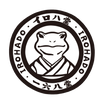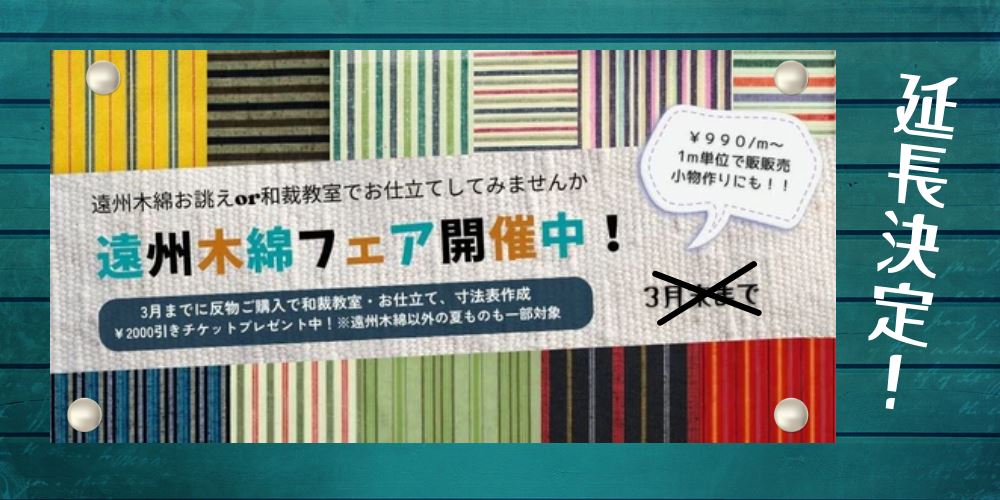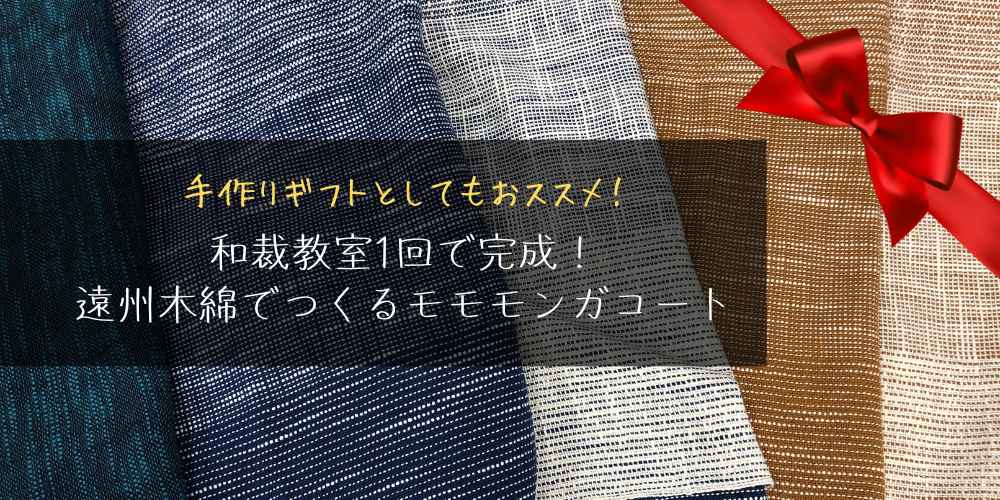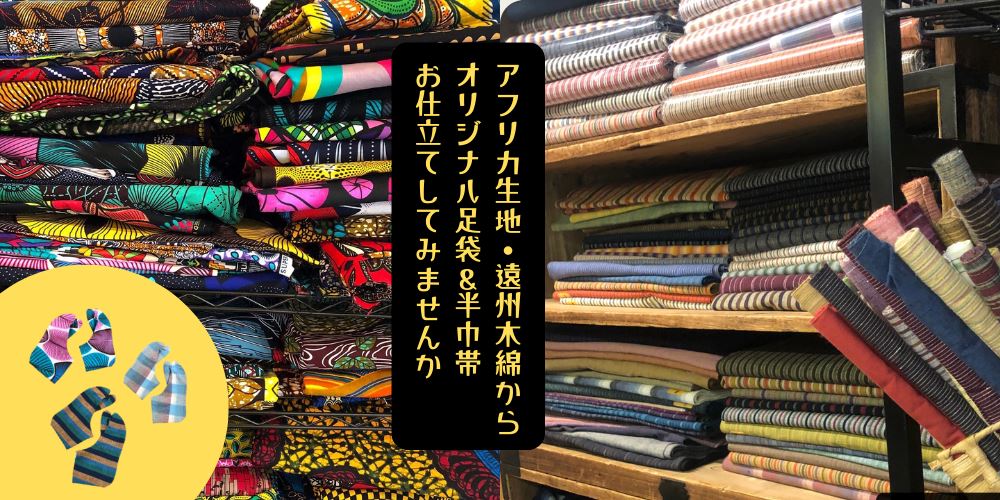``Are you sewing kimono by hand? ! ”
"Hyper! I'm clumsy, but is it okay? ”
“Where should I start? ”
We have recently received many inquiries regarding our new Japanese sewing class. We are very happy to see that people of all ages are interested in our work. The following are some of the questions we have received relatively frequently from our conversations with customers since we started our Japanese sewing class in the summer of 2020.
The person writing this blog is just a contact person for Japanese sewing classes, and the owner is an amateur when it comes to Japanese sewing techniques. ! ” I was quite surprised at first. However, when I started getting asked that question more than once or twice, I thought about it more and more and more, and I was convinced that it was what it was. Nowadays, most pret-made yukatas are made by sewing machines overseas, and it is no wonder that we no longer see people unraveling or mending kimonos at home, which you would have seen back when kimonos were worn for everyday wear. It may be. If you only look at the text of the question, you won't be able to understand the expression in the voice, and it seems that people will interpret it in different ways, but in fact, everyone I talked to seemed to have a favorable and positive view of the fact that it is hand-sewn. There were only people there. ``It's an amazing skill to sew all of this by hand!'' ``I don't have a sewing machine at home, so I'm glad I sewed it by hand,'' ``I've always wanted to learn how to do something with my hands, so I want to try it for the first time.''
The second one, ``I'm super clumsy, but is it okay?'' ” is a question that most people may ask. That's what everyone says so often. More than 90% of the students in our washi sewing class are students who are attending our washi class for the first time. I think there are some people who are worried about whether it will continue, so we do not charge a membership fee, so we would appreciate it if you could feel free to join us once.
The third question is “Where should I start?” ” is a question we often receive. Our Japanese sewing class does not have a curriculum, the assignments are negotiable, there is no joining fee, and the number of sessions is free. We hope that you will be able to start when you feel like it and continue at your own pace, but there may be many people who are hesitant to take the first step because there are so few restrictions. In that respect, I am reflecting on my lack of communication skills. Therefore, this time I would like to introduce some recommended tasks for those who are slightly interested in Japanese sewing. Although we are exaggerating as BEST 3, this is an arbitrary ranking created by the owner, so please use this as a reference.
Recommended assignments for first-time Japanese sewing classes 2023 Best3! Completed in one session
[Recommended ① Making an Azuma bag using a tenugui towel]

Why not try making an Azuma bag from a tenugui at home or an untied yukata strip? When made with a tenugui, it's compact and just the right size when shopping at a bakery. Any fabric other than tenugui that can be sewn by hand with a ratio of about 1:3 length x width is OK! Although it takes more time, you can make a nice Azuma bag by connecting three square pieces of fabric. *The photo below was created using three Enshu cotton pongee haggis.

If you want to use it as an eco bag, it is best to use washable material and it is easy to sew, but if you want to make a bag-in-bag such as a basket bag that does not need to be washed often, use silk material made from unraveled kimono memories. It's also nice to try sewing. Regarding materials, we sell some of them online for use in Japanese sewing classes, and we also have many available in physical stores, so please feel free to contact us.
[Recommended ② Make a waist string from your favorite fabric]
What kind of waist strap do you use as a dressing accessory? White or pink muslin waist straps are often used because they are invisible after wearing, but wouldn't it be even more fun to dress up if you made them from your favorite fabric and at the length you like? ! If you're wearing a kimono to use as a sash for work at home, you'll want to make it out of a unique fabric.
The approximate length of fabric you'll need is 12cm wide x 230cm (you can choose the length as you like!) If you don't have enough length, you can create an interesting waist strap by joining two different types of fabric together.

Recommended ③ Making a half-collar and attaching a half-collar from your favorite fabric
When you start wearing a kimono, you will have the problem of wearing a half-collar. I've tried it by reading books, watching videos, or doing it on my own, but I want to learn it properly! The half-collar is popular among people who like this. In addition to using your own size long undergarment, we also offer half-collar wearing lessons with undergarments that suit your own kimono lifestyle, such as utsuki-collars, half-collars, T-shirt-shaped undergarments, and two-part-style undergarments. There are also people who use half-collars other than commercially available half-collars, such as making tenugui towels into half-collars, or bringing their favorite fabric and cutting it to make half-collars. If you have a lot of fabric, it would be great to make matching Azuma bags.

There are many other tasks that can be done in one lesson, in addition to those listed above, but we recommend the three above as tasks that you can start using whatever you have at home. Until now, there have been some issues that have arisen from customer feedback, so we have asked, ``Can we do this?'' ” and other opinions are welcome. Please feel free to contact us.
Up until now, I have been introducing the Japanese sewing class from time to time on Twitter (currently X), but from now on I will also be posting information about the class, recommended assignments, and introducing students from this blog. Look forward to!










